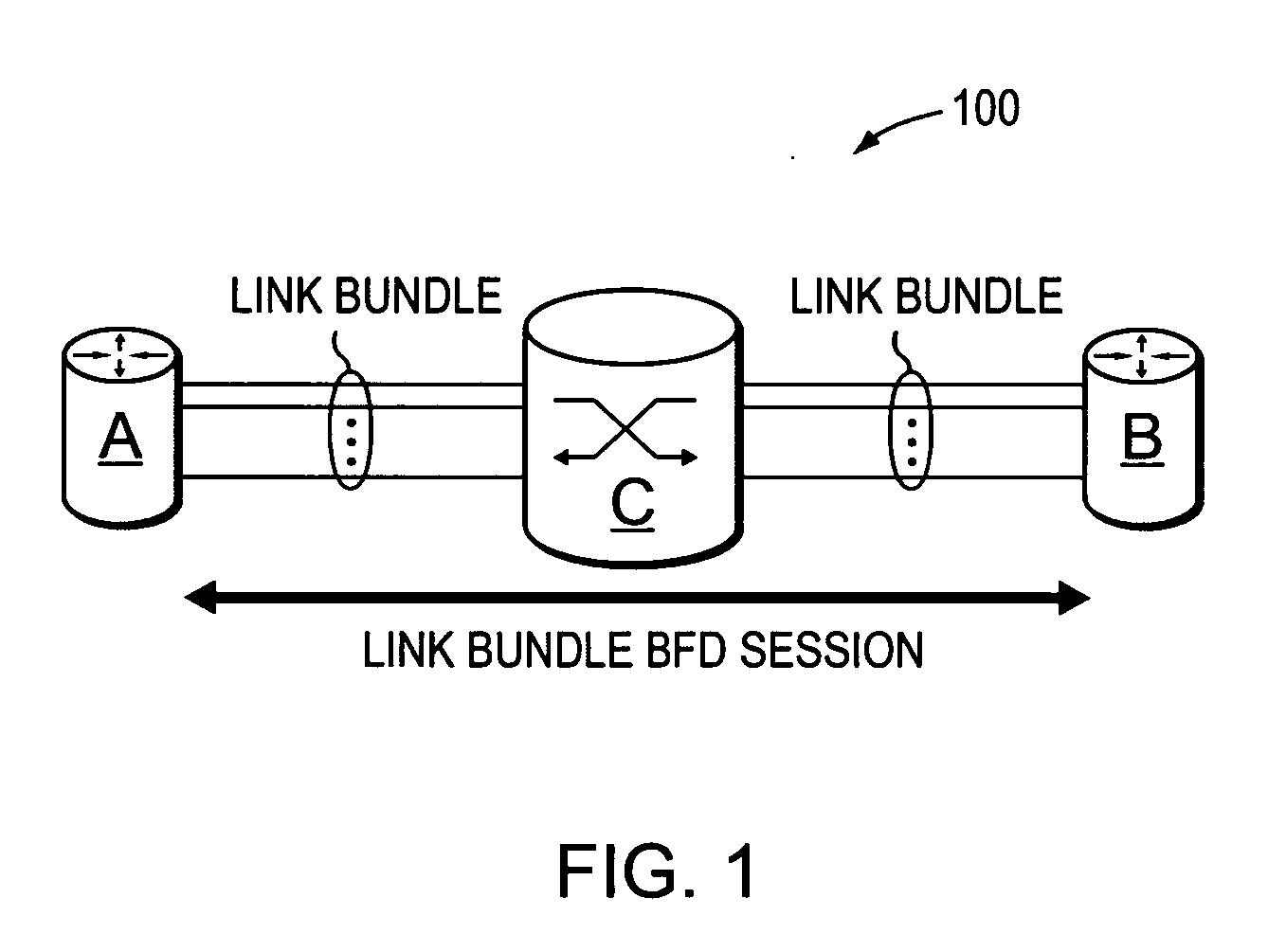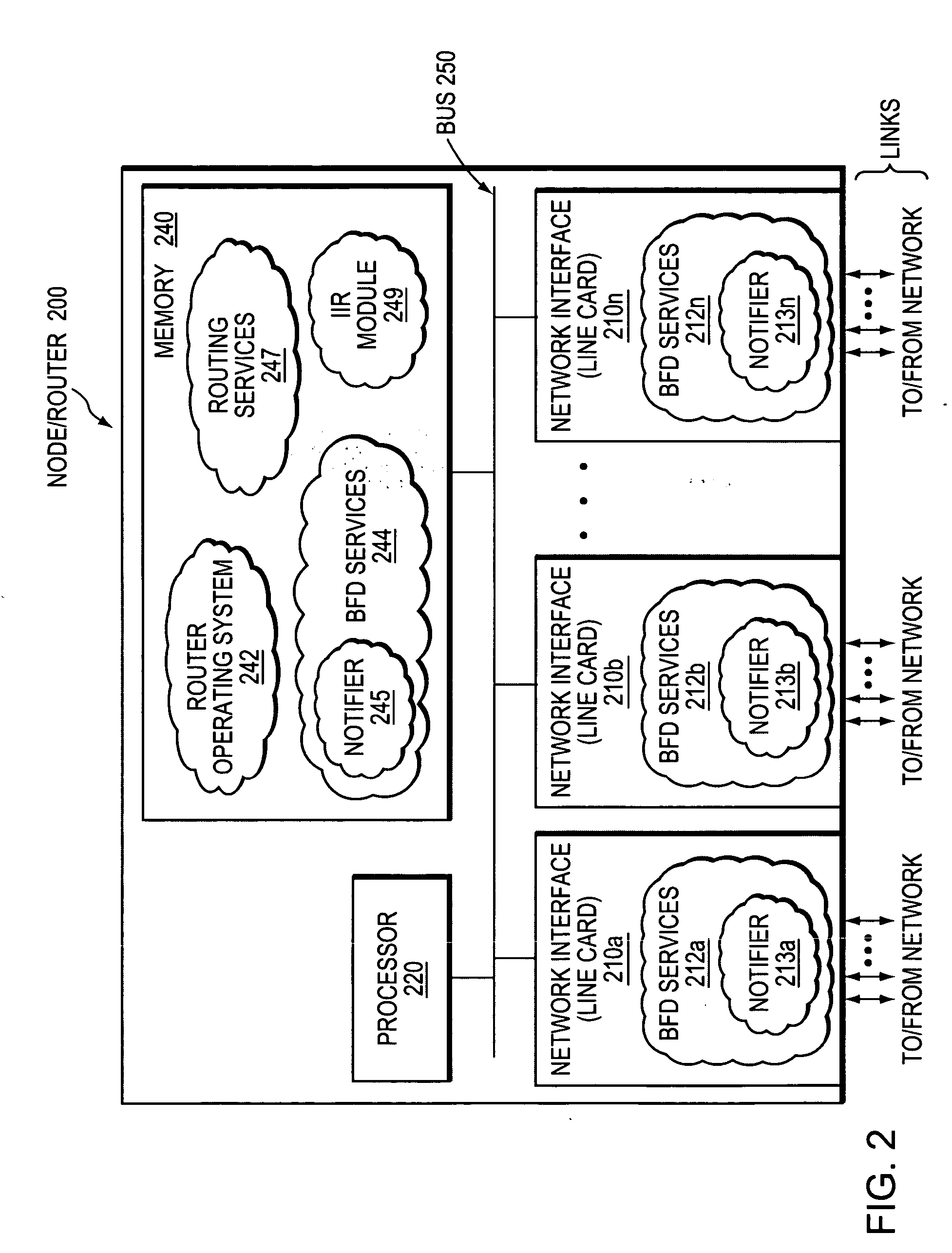Technique for efficiently and dynamically maintaining bidirectional forwarding detection on a bundle of links
a technology of bidirectional forwarding and bundles, applied in the field of computer networks, can solve the problems of devices destroying or closing the bgp session, nodes may not be able to communicate with one of their neighboring nodes, etc., and achieves the effects of reducing the number of nodes
- Summary
- Abstract
- Description
- Claims
- Application Information
AI Technical Summary
Benefits of technology
Problems solved by technology
Method used
Image
Examples
Embodiment Construction
[0028]FIG. 1 is a schematic block diagram of an exemplary computer network 100 comprising a plurality of nodes A-C, such as routers, switches, or other network devices, interconnected as shown. For instance, node A may be connected to node C via a plurality of links arranged as a first bundle interface (link bundle), and node B may be connected to node C via a plurality of links arranged as a second link bundle. Illustratively, nodes A and B may be embodied as routers (layer 3), while node C may be embodied as a switch (layer 2). As such, the link bundles may appear to each of the routers A and B as a single link bundle (layer 3) from A to B, as will be understood by those skilled in the art. The nodes may be a part of one or more autonomous systems, routing domains, or other networks or subnetworks. These examples are merely representative. Those skilled in the art will understand that any number of routers, switches, nodes, links, etc. may be used in the computer network 100 and c...
PUM
 Login to View More
Login to View More Abstract
Description
Claims
Application Information
 Login to View More
Login to View More - R&D
- Intellectual Property
- Life Sciences
- Materials
- Tech Scout
- Unparalleled Data Quality
- Higher Quality Content
- 60% Fewer Hallucinations
Browse by: Latest US Patents, China's latest patents, Technical Efficacy Thesaurus, Application Domain, Technology Topic, Popular Technical Reports.
© 2025 PatSnap. All rights reserved.Legal|Privacy policy|Modern Slavery Act Transparency Statement|Sitemap|About US| Contact US: help@patsnap.com



